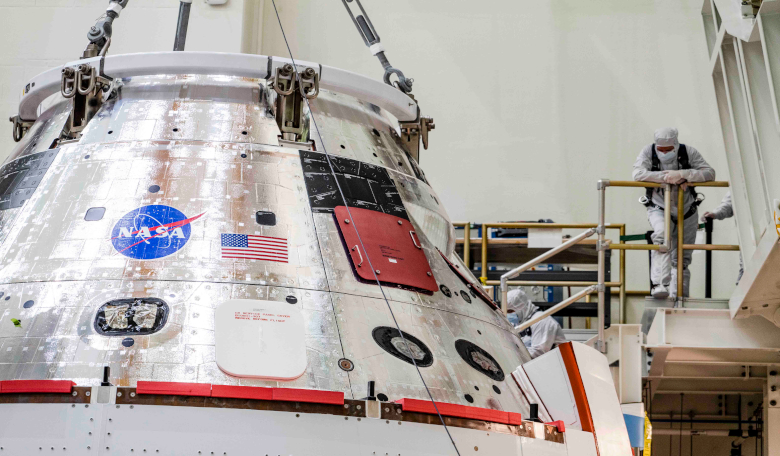Lockheed Martin is speeding up production of Orion astronaut capsules by opening a 5,000-square-metre “digitally-transformed factory of the future” in Titusville, Florida, near NASA’s Kennedy Space Center.
Work at Lockheed Martin’s new Spacecraft Test, Assembly, and Resource Center, or STAR Center, begins with the Orion vehicle for NASA’s Artemis 3 mission envisioned to return US astronauts to the Moon’s surface for the first time in the modern era.
The new factory represents Lockheed Martin’s “commitment to build sustainable and affordable capabilities for NASA to send astronauts to explore the Moon and eventually Mars,” said Lisa Callahan, vice president and general manager for Commercial Civil Space at Lockheed Martin Space.
The company spent $20 million to renovate a building that formerly housed a tourist attraction where visitors experienced aspects of astronaut training. It now features a clean room, testing cell, high bay with ceiling crane, non-destructive inspection capability, and a new machine shop.
Lockheed Martin has made some parts of the Orion vehicles at its Colorado factory and assembled the capsules for the Artemis 1 and Artemis 2 test flights to lunar orbit and back, uncrewed and crewed respectively, at KSC’s Neil Armstrong Operations and Checkout Building. The new centre will initially employ 75 people, whereas about 360 staff currently work on Orion at the KSC building.
While providing “urgently needed space to expand and streamline manufacturing capacity,” according to the company, the STAR Center also joins Lockheed Martin’s Intelligent Factory Framework for internet-of-things device connectivity. This interconnectivity treats data “as a strategic asset” while giving staff at both sites visibility over workflows and equipment.
Lockheed Martin delivered the Orion vehicle for Artemis 1 to NASA’s Exploration Ground Systems personnel in January. NASA most recently transported the vehicle from KSC’s Multi-Payload Processing Facility to the Launch Abort System Facility on July 10 for Orion’s emergency launch-abort system to be added. Next, at KSC’s Vertical Assembly Facility, Orion will be placed atop NASA’s first Space Launch System rocket.
Bill Nelson, a former US senator and NASA’s new administrator under President Joe Biden, has said Artemis 1 will launch on the first SLS later this year.
Meanwhile, parts of the Artemis 3 vehicle have already started to come together. Whereas Artemis 2 astronauts will orbit the Moon without landing, a separate human landing system would take Artemis 3 astronauts to the Moon’s surface.
Lockheed Martin has agreed to build as few as six and as many as 12 Orion vehicles for NASA. Some parts, such as the crew modules, are expected to be reusable at least once.
The STAR Center will accommodate:
- Assembly and testing of Orion’s aeroshell heat shield and installation of its thermal protection system
- Fabrication and testing of crew module and crew module adapter wire harness
- Assembly and testing of propulsion, environmental control, and life support systems
- Production of electrical ground support equipment.
While Orion will be NASA’s first crewed vehicle bound for deep space in decades, Lockheed Martin is looking further ahead,
The STAR Center “allows us to be in a position to go beyond Orion,” said Kelly DeFazio, Orion programme director for production. “We are making our mark that we’re here to stay and showing that we’re strong competitors who are creating efficiencies and agility here at the entrance to Kennedy Space Center.”











